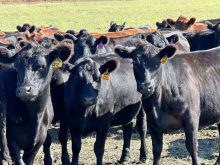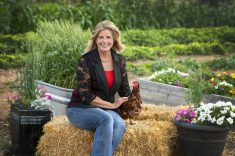As he heads into retirement, Ward Toma says the crop’s future is as bright as it was when he was starting out
As he looks into the rear-view mirror of history, Alberta Canola general manager Ward Toma points to 2003 as a turning point.
But not because of what happened in the canola sector, but rather the earthquake that hit the cattle business when BSE was discovered in an Alberta cow.
In each of the two years prior to that, fewer than three million acres of canola were grown in Alberta (and less than 10 million in the entire country). After 2003, those sorts of low numbers would never be seen again — as acreage both provincially and nationally has more than doubled since then.
“A lot of the acreage growth that, in my view, happened in canola was because of feed grains being taken out of production because of the shrinking of the cattle herd,” said Toma. “The cattle in Canada shrank by a third. A lot of barley acres and summerfallow acres moved to canola.”
There have, of course, been a lot of other changes in the 23 years since Toma, who retires at the end of the month, began working for the farm group.
By the time he arrived in 1999 (after a decade working for Alberta Pork), the foundation for that explosive growth had been laid, with the 1995 introduction of herbicide-tolerant varieties being key. But adoption of these new varieties (starting with Roundup Ready and now including LibertyLink and InVigor) didn’t happen overnight.
“They weren’t really in a lot of use in the industry,” said Toma. “They were still very new, and they were being tested, trialled, and demonstrated. The number of acres was relatively small, but growing.”
Still, producers were watching and increasingly they saw not only a financial advantage in growing genetically modified canola but also the environmental benefit of being able to ditch summerfallow and control weeds without tillage.
“Where folks might have done a chemfallow pass and left it to fallow that way, they could still do the equivalent of a summerfallow and produce a crop,” said Toma. “So the benefits to the soil were huge (and) producers could still get a good return.
“It really led to the adoption of conservation tillage and helped with that transition.”
But BSE wasn’t the only major event in 2003 for the canola sector. It was also the year that clubroot was found in several fields near Edmonton.
“One (BSE) had an immediate impact on agriculture in Alberta and the other has had a long-term impact,” noted Toma.
But technology has advanced greatly since then, he added.
“As more scientific tools come forth, you’re able to move things that much better,” he said. “Even the work that has been done in clubroot now, at the breeding level, is so much more advanced than what we were able to achieve 20 years ago. They had transgenics and they had the old-fashioned approach. Now the breeders have so many different tools at their fingertips to try and do so many different things.
“Solutions come up so much easier. Challenges are overcome a lot faster and a lot better.”
Aside from clubroot, the biggest challenge for canola has always been the regulatory issues around biotechnology, particularly opposition to genetic modification which “became a political issue, and introduced a whole lot of costs and problems.”
However, advances in genomics and gene editing is altering the conversation, said Toma.
“Some of the governments that were so adamantly opposed to it 20 years ago are changing their view because of the new technologies that are coming along,” he said.
Moreover, biotechnology will be able to offer ways to grow canola more efficiently, which will lower greenhouse gas emissions from its production, he said.
And Canada’s solid regulatory oversight system is an important advantage.
“That’s one of our strengths,” he said. “We have a good handle on these things to make sure environmental damage isn’t done. I think that’s why the Canadian canola industry will go forward.”
Add it all up and the future of the canola sector looks as bright today as it did at the start of his career, said Toma.
“We have all this incredible natural resource,” he said. “It’s a real resource that’s there and it’s not diminishing. People need that food.”
Toma’s successor is Karla Bergstrom, the farm group’s longtime manager of government and industry affairs.
















